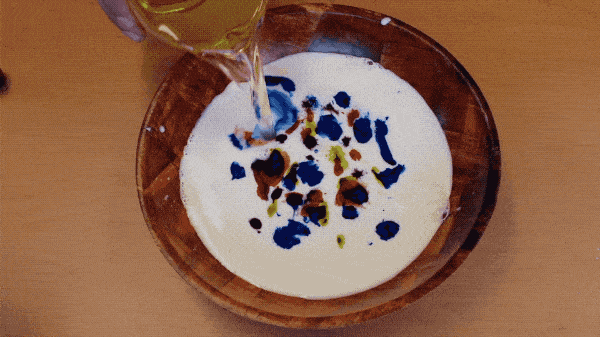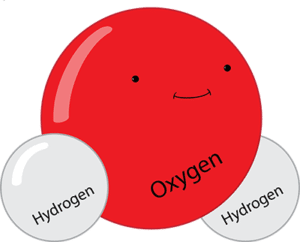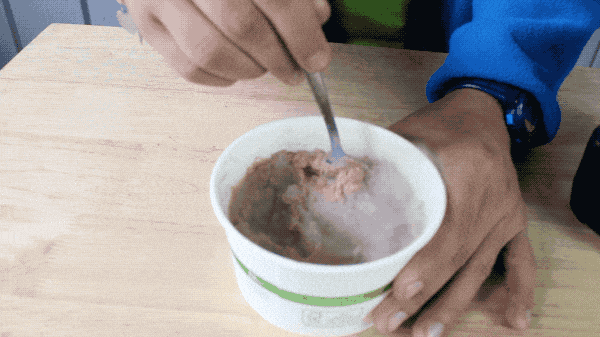
Oil and water won’t mix no matter how hard you try. They have different densities and different polarities. But what happens when you mix oil and milk?
Milk is an emulsion. It is made of mostly water with lipids throughout. Lipids are organic compounds that are fatty acids or their derivatives and are insoluble in water but soluble in organic solvents.
Water is a “polar” molecule, meaning that there is an uneven distribution of electron density. Water has a partial negative charge (-) near the oxygen atom due the unshared pairs of electrons, and partial positive charges (+) near the hydrogen atoms. Due to the polarity, the attractive forces are very strong in water molecules. Oil is nonpolar, which means the attractive forces are pretty neutral.
Any liquid, to be able to mix with another needs to have nearly equal amounts of attractive forces among the molecules of both liquids. When you add oil to a bowl of milk something bizarre and amazing happens. You will see hundred of spheres form. The spheres are drops of milk which are surrounded by a layer of oil. These are technically bubbles!
But these bubbles are pretty hard to pop. You can even stir them and see how they move through the layer of oil! Give it a try for yourself.
Written by: Mimi Garai




